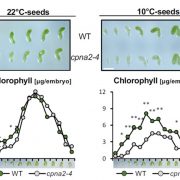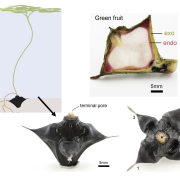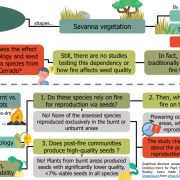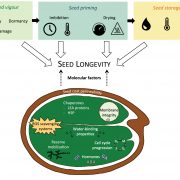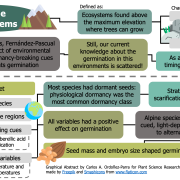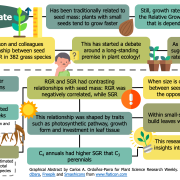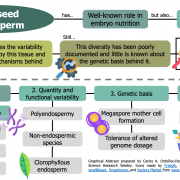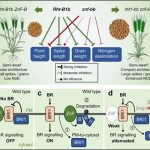Unveiling the hot secrets of seed thermoinhibition: The endosperm’s role in plant survival
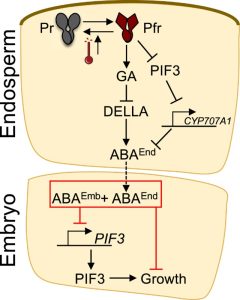 An important phase in a plant’s life cycle is transforming from embryo to seedling, when it transitions from a protected space inside the seed to a vulnerable seedling. The capacity of the seedling to tolerate its surroundings determines its survival and eventual reproductive success. In addition to dormancy, which prevents seed from sprouting until favourable environmental circumstances are met, high temperature-mediated inhibition of germination (thermoinhibition) adds another layer of regulation, allowing seeds to germinate during optimal reproductive seasons. Temperature sensing involves phytochromes, particularly phytochrome B (phyB), and phytochrome-interacting factors (PIFs). Recent research by Piskurewicz et al. indicates that thermoinhibition in Arabidopsis relies on the endosperm rather than the embryo. High temperature-mediated decreases in endospermic phyB signaling leads to increased accumulation and release of a plant hormone, abscisic acid (ABA). The process involves two parallel signaling pathways mediated by DELLA and PIFs, specifically PIF1, PIF3, and PIF5. These factors regulate the expression of genes involved in ABA synthesis and degradation. PIFs inhibit embryonic growth by allowing ABA to accumulate. PIF3-mediated ABA release maintains low levels of embryonic PIF3 expression, which inhibits embryonic growth. The work highlights the significance of phyB signalling in the endosperm for regulating the embryo-to-seedling transition and underscores the function of PIFs as crucial elements of this signalling pathway. (Summary by Rajarshi Sanyal, @rajarshi_sanyal) Nature Comms, 10.1038/s41467-023-36903-4.
An important phase in a plant’s life cycle is transforming from embryo to seedling, when it transitions from a protected space inside the seed to a vulnerable seedling. The capacity of the seedling to tolerate its surroundings determines its survival and eventual reproductive success. In addition to dormancy, which prevents seed from sprouting until favourable environmental circumstances are met, high temperature-mediated inhibition of germination (thermoinhibition) adds another layer of regulation, allowing seeds to germinate during optimal reproductive seasons. Temperature sensing involves phytochromes, particularly phytochrome B (phyB), and phytochrome-interacting factors (PIFs). Recent research by Piskurewicz et al. indicates that thermoinhibition in Arabidopsis relies on the endosperm rather than the embryo. High temperature-mediated decreases in endospermic phyB signaling leads to increased accumulation and release of a plant hormone, abscisic acid (ABA). The process involves two parallel signaling pathways mediated by DELLA and PIFs, specifically PIF1, PIF3, and PIF5. These factors regulate the expression of genes involved in ABA synthesis and degradation. PIFs inhibit embryonic growth by allowing ABA to accumulate. PIF3-mediated ABA release maintains low levels of embryonic PIF3 expression, which inhibits embryonic growth. The work highlights the significance of phyB signalling in the endosperm for regulating the embryo-to-seedling transition and underscores the function of PIFs as crucial elements of this signalling pathway. (Summary by Rajarshi Sanyal, @rajarshi_sanyal) Nature Comms, 10.1038/s41467-023-36903-4.


